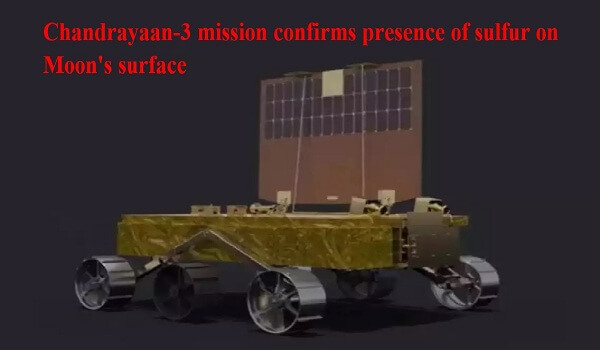ISRO’s Chandrayaan-3 mission’s Pragyan rover has successfully confirmed the presence of sulphur on the lunar surface near the south pole. Utilizing the Laser-Induced Breakdown Spectroscope (LIBS) instrument, this achievement marks the first in-situ measurements of lunar composition. Elements like aluminium, calcium, iron, and more have also been detected by the rover. These findings are crucial for enhancing our understanding of the moon’s elemental makeup.
Chandrayaan-3 aims to achieve multiple objectives, including safe landing, rover capabilities demonstration, and in-situ scientific experiments. The mission’s unique landing near the lunar south pole gives India a significant advantage in collecting groundbreaking data, with possibilities for extension if equipment withstands lunar night temperatures.
How did the Chandrayaan-3 mission confirm the presence of sulphur on the lunar surface
- The Pragyan rover carried the Laser-Induced Breakdown Spectroscope (LIBS) instrument, which exposed the lunar material to high-energy laser pulses.
- This generated localized plasma, whose spectral analysis allowed scientists to determine the presence of sulphur and other elements on the moon’s surface.
Significance does the confirmation of sulphur hold for lunar exploration
- The confirmation of sulphur presence contributes to our understanding of the moon’s elemental composition, which is essential for comprehending its geology, history, and potential resources.
- This discovery offers insights into the moon’s past and its relationship with Earth.
What other elements were detected by the LIBS instrument on the Pragyan rover
- Besides sulphur, the LIBS instrument detected elements like aluminium, calcium, iron, chromium, titanium, manganese, silicon, and oxygen. These findings provide a comprehensive overview of the moon’s elemental composition.
How is India’s landing near the south pole of the moon advantageous for lunar exploration
- India’s landing near the lunar south pole, a unique achievement, grants the country an advantageous position for collecting unprecedented data. This location offers opportunities for groundbreaking discoveries that can significantly contribute to lunar science.
What are the primary objectives of the Chandrayaan-3 mission
- Chandrayaan-3 aims to achieve a safe and soft landing on the moon, demonstrate the capabilities of the rover on the lunar surface, and conduct in-situ scientific experiments. It follows the Chandrayaan-2 mission and seeks to build on its achievements in lunar exploration.

